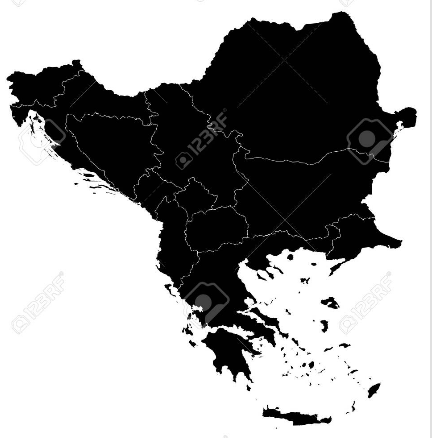Vladimir Shopov, an analyst at the European Council on Foreign Relations, says that over the past ten years, China has pursued a strategy of patient positioning in the Western Balkans, using various tools to pressure these small states on the European Union's doorstep.
The highway built by the Chinese company CRBC with a loan from the Chinese bank Exim Bank, the repayment of which threatens to plunge Montenegro into debt, is just one example.
However, China remains a strategic partner for Montenegro in building infrastructure, with numerous donations to institutions, cultural and educational agreements, student exchanges and study trips by journalists to China...
Today, the potential withdrawal of the United States from the economic and political sphere of the Western Balkans opens space for "third players," Vladimir Shopov warned.
This would give Western Balkan governments greater leeway in dealing with Beijing and Moscow, which could lead to unequal relations, as was the case with the Bar-Bolyare highway project.
The China Road and Bridge Corporation (CRBC) has been working for seven years on the first 41km section of the Bar-Bolyare highway.
However, the work was completed three years late, and part of the Tara River suffered a serious environmental disaster. Moreover, the contract is still being kept secret.
This section of the highway, which cost more than USD 900 million, was built thanks to a loan from the Chinese Exim Bank. But before the first instalment was paid in 2021, a hedging agreement was signed with Western banks to protect Montenegro's public finances from the currency risk associated with the loan.
In March 2023, the Chinese ambassador to Montenegro, Fan Kun, described the risk of Montenegro becoming over-indebted because of the loan to Exim Bank as "biased".
This is not the only agreement between the Montenegrin state and this Chinese bank. Between 2010 and 2012, the Bank of Exim was the largest bank in the country. Montenegro purchased four cargo ships built by the Chinese company Poly Technologies, thanks to a loan from Exim, the repayment of which amounting to $93.7 million, which is still ongoing, was guaranteed by the state.
Three Chinese companies also bid for the preliminary tender for the construction of the second section of the highway in northern Montenegro, but this tender was cancelled in early February.
At the end of February, the European Bank for Reconstruction and Development (EBRD) launched a new call for tenders for the selection of the design and contractor for the construction of the 23.5 km highway, estimated to cost around €600 million. The EBRD will provide €100 million to support the work.
As for the Chinese company Shandong, it is participating in the largest current reconstruction project - that of the Tivat-Budva road, a 16-kilometre route worth €54 million, with a deadline of January 2026.
The €60 million reconstruction of the Pljevlja thermal power plant is also being carried out by a Chinese company, Dongfang Electric Corporation, while Shanghai Electric Power Engineering has completed the Mozhura wind farm, between Bar and Ulqin, in the south of the country.
In May, the Chinese company Shandong Luqiao Group will start the reconstruction of the bridge over the Tara River in Jurejjevica, a €7 million project funded by a grant from the Chinese government.
According to the Central Bank of Montenegro, in the period 2006-2019, Chinese investments amounted to around ten million euros, rising to 71.2 million euros in 2020. The following year they dropped to 6.5 million and by 2022 to less than one million euros.
The framework agreement on economic and technical cooperation between China and Montenegro, signed twelve years ago, has led to donations worth several million euros, including hybrid cars, multimedia equipment for schools, medical and financial aid during the pandemic, and IT equipment...
Trips to China have been organised for Montenegrin teachers, local and state government officials and business people, and Chinese language and culture are promoted by two Confucius Institutes located in one public and one private university.
Montenegrin and Chinese higher education institutions have also signed several cooperation protocols. The most recent is from 2024, with Shandong Jiaotong University, and provides for "exchange of faculty and students, as well as transfer of knowledge and advanced technologies". This year and next, the two countries' science ministries will carry out fifteen joint research projects.
Formal media cooperation also began in 2019 with the signing of an agreement between the Public Broadcaster of Montenegro (RTCG) and the China International Television Corporation. RTCG has expanded its cooperation with the China Media Group, which includes the largest Chinese media outlets, most of which are state-owned and directly controlled by the government.
According to a 2023 report by Reporters Without Borders (RSF), China has been described as "the world's largest prison for journalists," with more than 100 journalists detained. The May 2024 report stated that China is one of the ten most dangerous countries in the world for media workers.
However, dozens of Montenegrin journalists have travelled to China as part of study visits organised in previous years. National media have published positive reports on the beauty of China's ancient architecture and technological development. Several participants informally confirmed that they were constantly accompanied by the organisers during their stay, with their freedom of movement severely restricted. | BGNES
---
Radio Free Europe reportage.

 Breaking news
Breaking news
 Europe
Europe
 Bulgaria
Bulgaria







